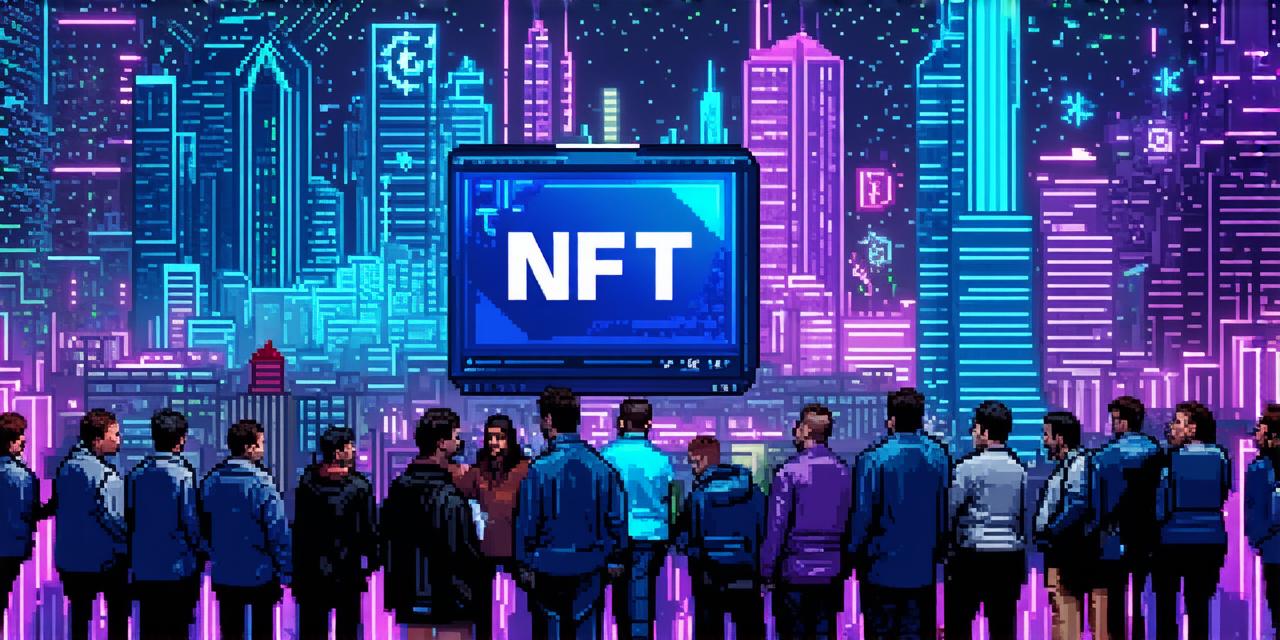The emergence of non-fungible tokens (NFTs) has revolutionized the way we perceive digital assets. From art to gaming, NFTs have opened up new possibilities and opportunities for creators and investors alike. However, as with any new technology, there are concerns about the sustainability and longevity of this trend. In this article, we will explore the current state of NFTs and their potential to stand the test of time.
Introduction:
The emergence of non-fungible tokens (NFTs) has revolutionized the way we perceive digital assets. From art to gaming, NFTs have opened up new possibilities and opportunities for creators and investors alike. However, as with any new technology, there are concerns about the sustainability and longevity of this trend. In this article, we will explore the current state of NFTs and their potential to stand the test of time.
The Rise of NFTs:
NFTs were first introduced in 2017 with the creation of Cryptokitties, a blockchain-based game that allowed users to collect and breed unique digital cats. This marked the beginning of a new era for digital assets, as NFTs enabled creators to tokenize their works and sell them directly to consumers without intermediaries.
Since then, the popularity of NFTs has grown exponentially, with notable successes such as the sale of a digital artwork by Beeple for $69 million at Christie’s in 2021. The gaming industry has also embraced NFTs, with games like Axie Infinity and Cryptodomes using them to create unique in-game items and characters.
The Advantages of NFTs:
One of the key advantages of NFTs is their ability to provide authenticity and scarcity. Each NFT is a one-of-a-kind digital asset that cannot be replicated or copied, making it highly valuable. This also creates a sense of exclusivity and prestige for owners, as they possess something truly unique.
NFTs also offer the potential for greater transparency and ownership. With blockchain technology, NFTs are stored on a decentralized ledger that is transparent and immutable. This means that ownership and provenance can be easily verified and traced, providing greater trust and security for buyers and sellers alike.
Furthermore, the use of smart contracts in NFTs enables automatic execution of transactions, eliminating the need for intermediaries and reducing transaction costs. This has the potential to democratize the art market and make it more accessible to a wider range of people.
The Risks of NFTs:
Despite these advantages, there are also risks associated with NFTs that must be carefully considered by game developers. One of the biggest risks is the potential for market volatility. The value of NFTs can fluctuate wildly, as seen in the sudden drop in the price of Bitcoin and other cryptocurrencies in 2018.
Another risk is the lack of regulation and standardization in the NFT market. As with any new technology, there are no clear rules or guidelines for how NFTs should be used or valued. This can lead to confusion and uncertainty among buyers and sellers, as well as potential legal issues.
The Future of NFTs:
Despite these risks, many experts believe that NFTs have the potential to stand the test of time and become a mainstream form of digital asset. As the technology continues to evolve and mature, it is likely that we will see more widespread adoption of NFTs in various industries, including gaming.
In order for this to happen, however, game developers must carefully consider the risks and benefits of NFTs and ensure that they are used in a responsible and sustainable way. This may involve working closely with regulators and industry experts to establish clear guidelines and standards for the use of NFTs.

